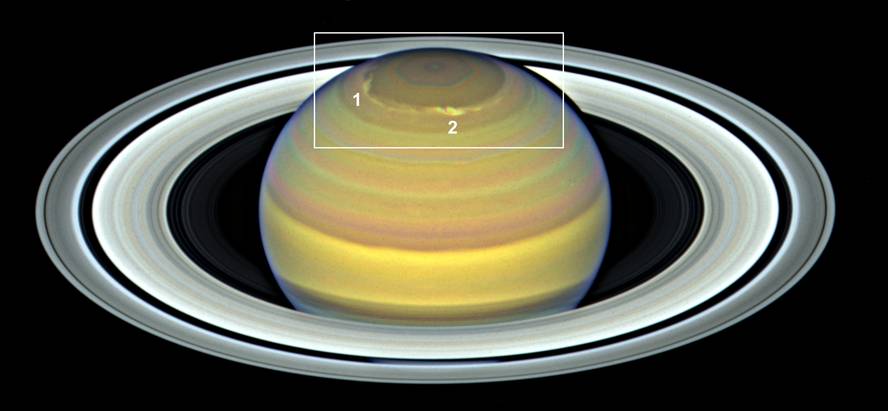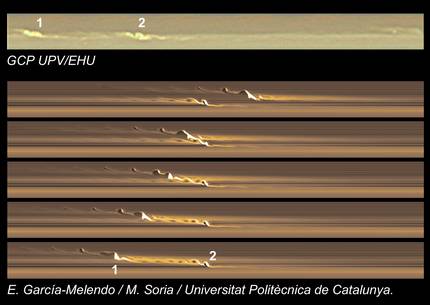Saturn observes complex storm systems

The UPV Planetology team has analyzed different polar storms in Saturn, under the direction of Professor Agustín Sánchez Lavega. They are large long-lasting storms that took place in 2018. The results of their follow-up have been published in the journal Nature Astronomy.
An amateur Brazilian astronomer first discovered, on March 29, 2018, a bright white spot on the disc of the planet Saturn, near the north pole. In a few days the spot grew and reached 4,000 km in length. About two months later another spot appeared to the north and, in the following months, the third and fourth, much closer to the north pole, at the same limit of the well-known hexagon of Saturn. It had never been seen in the observations.
The spots moved during these months at different speed, driven by the jet atmospheric currents to the east and west of Saturn. Its strength depends on latitude. The first spot, more flown, was moved to the east at 220 km/h, while the northernmost one was moving 20 km/h to the west. Storms were found creating atmospheric perturbations. These perturbations extend to the entire north pole of Saturn.

According to the characteristics of the spots, it seems that they are formed by convection in the low clouds about 200 km below the clouds that are vened.The hot and humid gas rises rapidly in the light atmosphere of hydrogen of Saturn, giving rise to the ammonia clouds that we see with telescope.«For the first time we have seen a phenomenon of these characteristics: several storms in different latitudes. So far we have only seen small isolated storms, or unusual and gigantic storms like the Great White Spots", explains Sánchez Lavega. Surprisingly, the first storm arose within a cyclonic swirl, as they have deduced through the images that Cassini obtained before destroying the spacecraft.
According to models created to simulate these storms, they have more energy than small and less energy than giants, but they do not know why they last so long. "On Earth these kinds of storms can last for a few days at most, but in Saturn the first spot was active for more than seven months," explains Sánchez Lavega. In addition, like the Great White Spots, these storms have only been observed in the northern hemisphere, never in the south. And it seems to emerge at a similar rhythm: Every 30 or 60 years.
The study has had the collaboration of numerous international agents: Cassini Space Mission, in planetary orbit until September 2017; Hubble Space Telescope, UPV PlanetCam Camera installed at the Calar Alto Observatory and a large network of amateur observers, whose images have contributed significantly to the daily evolution of the phenomenon.





